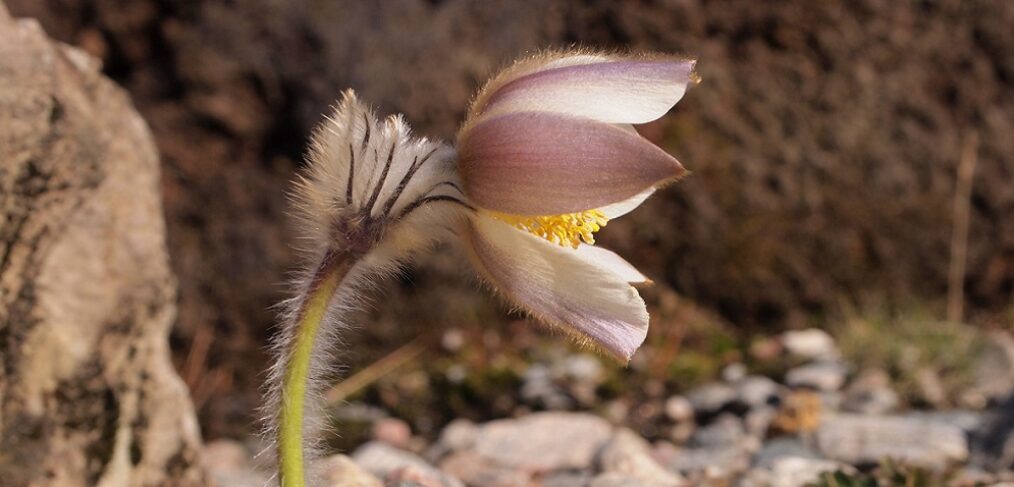
species of the week #92 – spring pasqueflower
There is only one plant of the spring pasque flower left in Rhineland-Palatinate. Yet it is a beautiful flower with a long flowering period. Its downfall is its preference for lean, sunny locations. However, our soils are now permanently fertilised by nitrogen oxides from the air. For this reason, among others, they are too rich in nutrients for the beautiful spring pasque flower in many places. This is a consequence of inadequate fertiliser regulations and pollutants from motorised road traffic and thermal power stations.
| Distribution status in Rhineland-Palatinate | Threatened with extinction |
| Remaining occurance | Alpes |
| Last sighting in Rhineland-Palatinat | 2020 |
| Habitat | Light pine forests, dry silicate grasslands |
| Threat | Nutrient input, scrub encroachment, picking |
The spring pasque flower is a perennial herbaceous plant that grows up to 5 to 15 cm high. The shaggy hairs on all parts of the plant are characteristic. Its light green, basal leaves are pinnate, typical of all buttercups. The flowers, which are purple on the outside and white on the inside, are bell-shaped and up to 6 cm wide. Flowering time is April to July.
The spring pasque flower is mainly native to the Alps and mountains of Europe up to altitudes of 3600 m above sea level. Its preferred habitats are pine forests (at lower altitudes) and silicate grasslands. It likes acidic and nitrogen-poor soils with a medium to good base supply and is very light-demanding. The populations are mosaic-like and mostly fragmented.
Although the plants can cause the so-called buttercup dermatitis with symptoms such as redness, itching or even blisters in sensitive people when they come into contact with the skin or mucous membrane, populations are also destroyed by picking. More serious than the removal of plants, however, is the loss of habitat. All over Europe, sunny meagre sites are declining. In Poland, afforestation is turning habitats too dark; in Sweden, which has little sun anyway, scrub encroachment cannot be controlled. In Germany, permanent nutrient input is the biggest problem.
In Bavaria, much has been done to save the vernal pasque flower from extinction, including successful and well-documented reintroduction and population support measures. However, the stable populations are mainly the result of devoted care by individual botanists. Medium-term stabilisation has not been achieved.
Click here for more species of the week
Image: By KeriMajorna – Own work, CC BY-SA 3.0, https://commons.wikimedia.org/w/index.php?curid=25730891
Translated with www.DeepL.com/Translator (free version)
